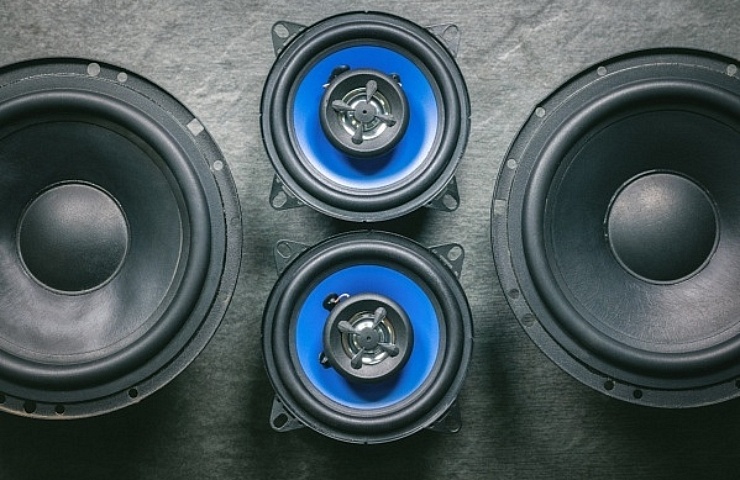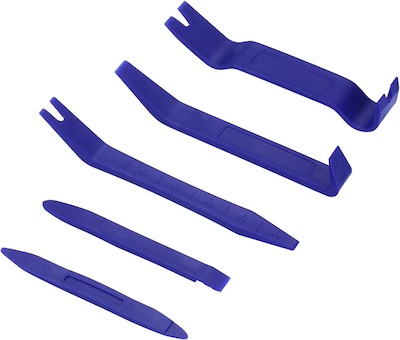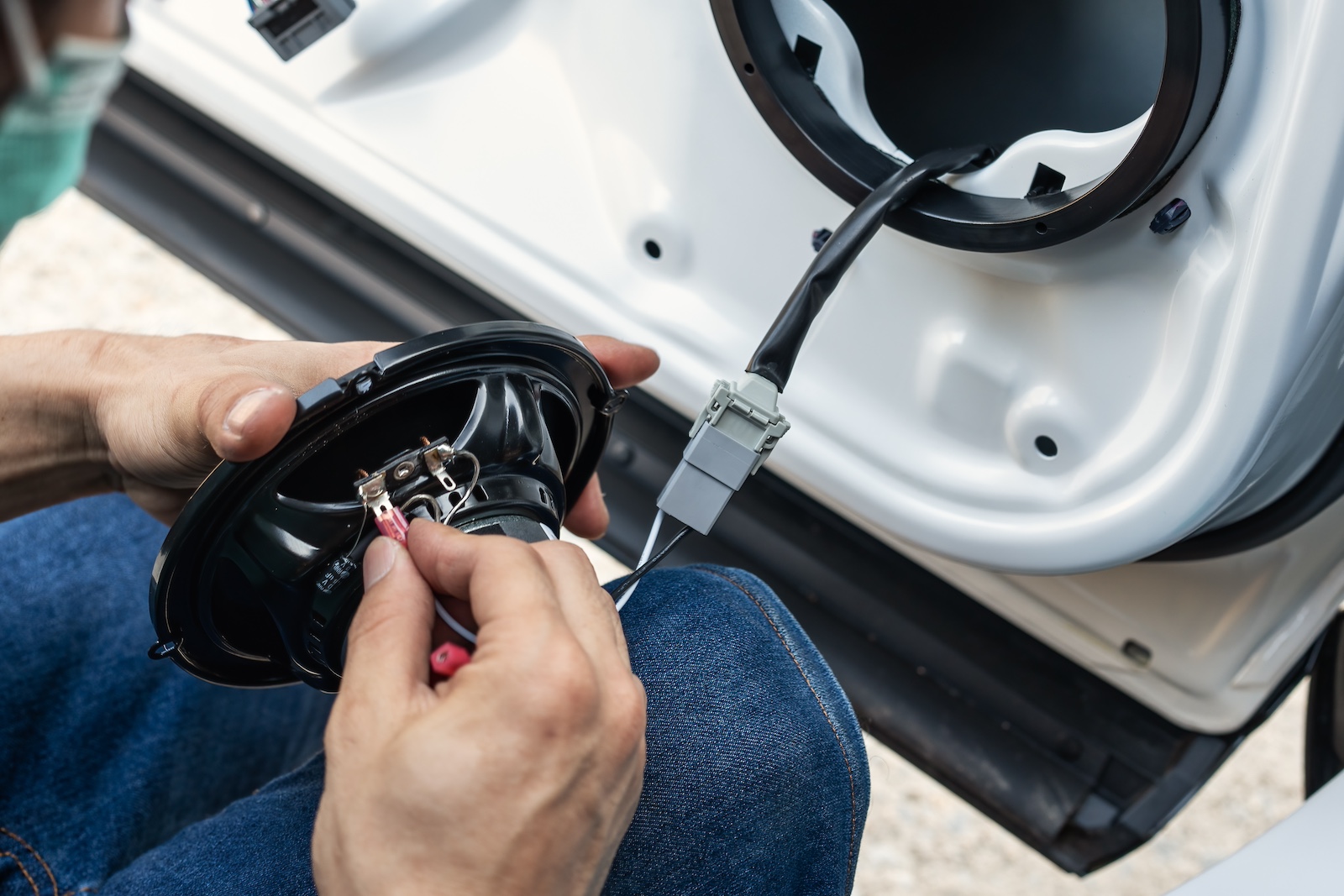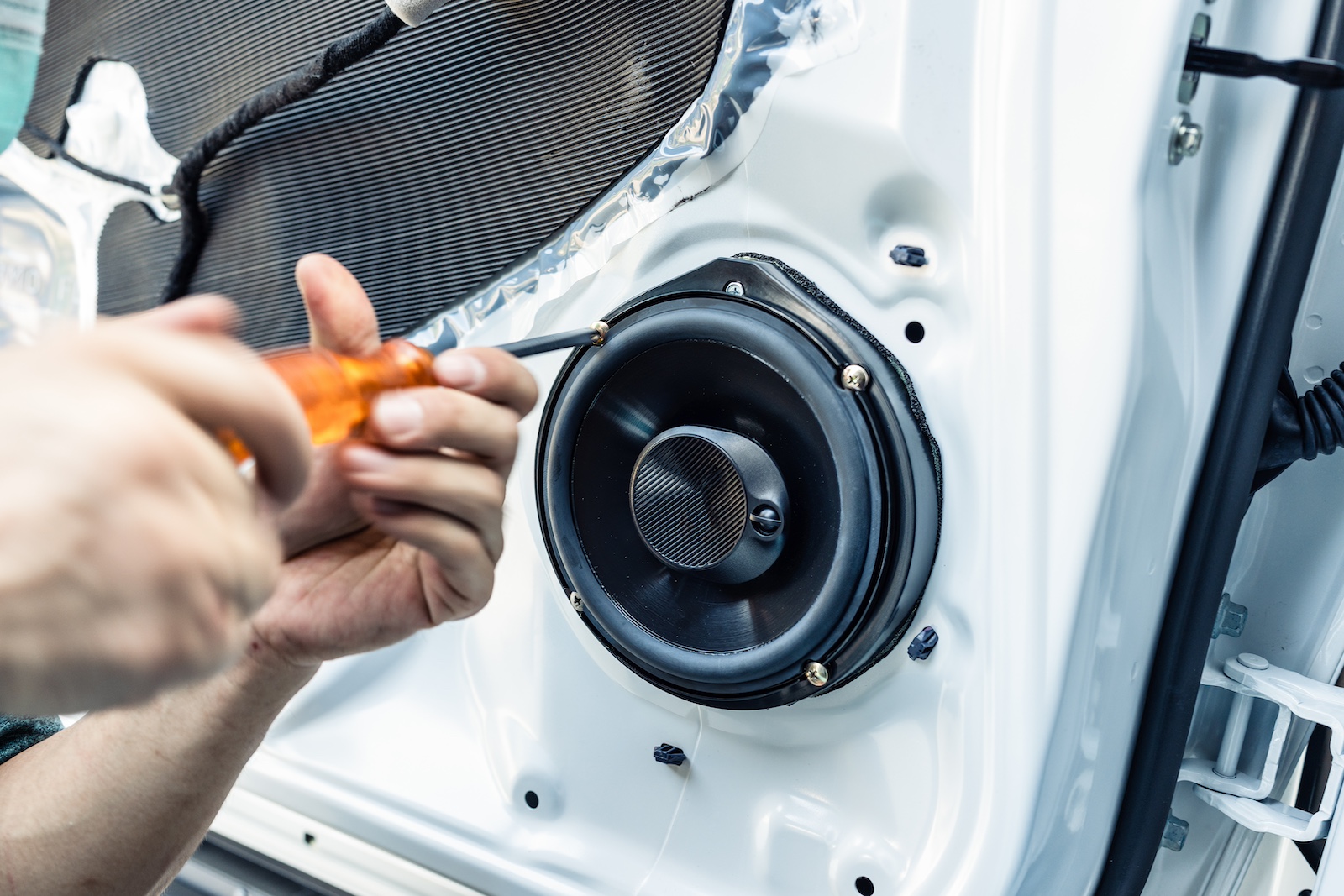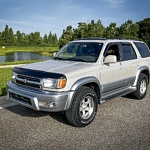Contents
Car Speaker Types and Technical Specs
What Are the Different Types of Car Speakers?
Your car could have only four speakers connected to the radio, or as many as 36. Regardless, there are three main sections for car speakers: tweeters, mid-range woofers, and subwoofers.
- Tweeters: The typical frequency range for human hearing is between 20 Hz and 20,000 Hz (hertz). Cymbals, flutes, and other high-pitched sounds come from the tweeters.
- Mid-Range Woofers: The workhorse range for stereo systems is 500 Hz to 5 kHz (kilohertz). Often referred to as “mids,” this is the broadest range played by one speaker. It’s where most music resides. The mid-range encompasses the entire sound spectrum, ranging from high to low frequencies.
- Subwoofers: The bottom end, 20 to 200 Hz, is the boom-boom bass you hear from a passing car. You don’t need subwoofers, but they enhance car audio, making it more immersive and allowing you to feel the music as much as you hear it.

Big bass comes from a subwoofer, like this Rockford Fosgate Punch 12-inch subwoofer.
Most factory stereo systems in modern cars include a built-in sub or two. But 10 to 15 years ago, that wasn’t the norm. So you’ll likely need to add one. Even when present, factory subs are often underpowered and lack punch. Upgrading can deliver a much deeper, fuller bass experience.
What’s the Difference Between Coaxial and Component Speakers?
Tweeters and mids are usually paired together as a set, either as a coaxial or separate.
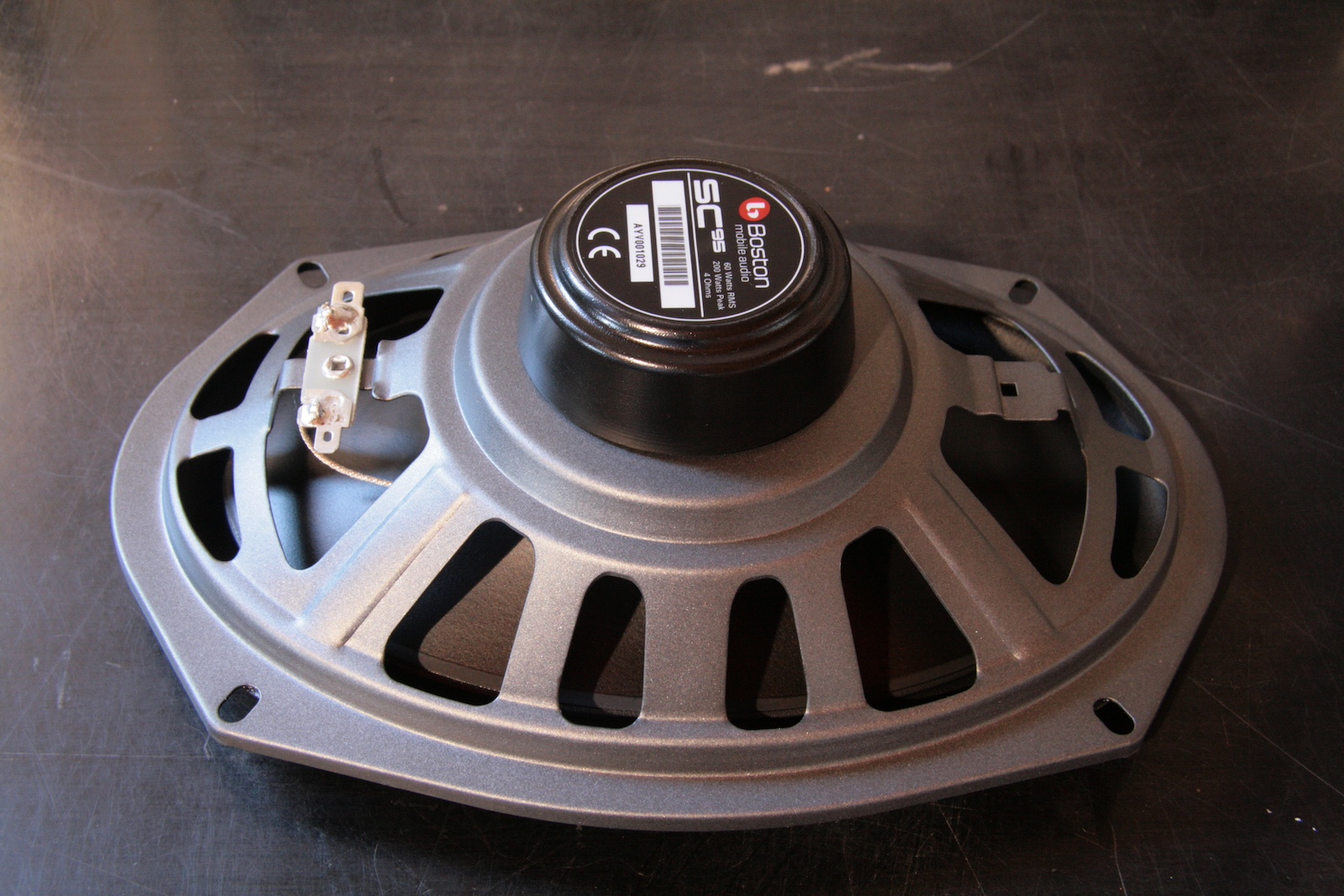
A classic size for rear speakers, the 6×9 provides a bit more bottom end (bass) than a typical round speaker.
Coaxial speakers have a mid as the main speaker, with a tweeter mounted in the center. This can be a bridge across the mid-speaker or center-mounted through the center of the mid-woofer’s cone. Most vehicles built before 2000 use these almost exclusively, and they are still used in many new vehicles.
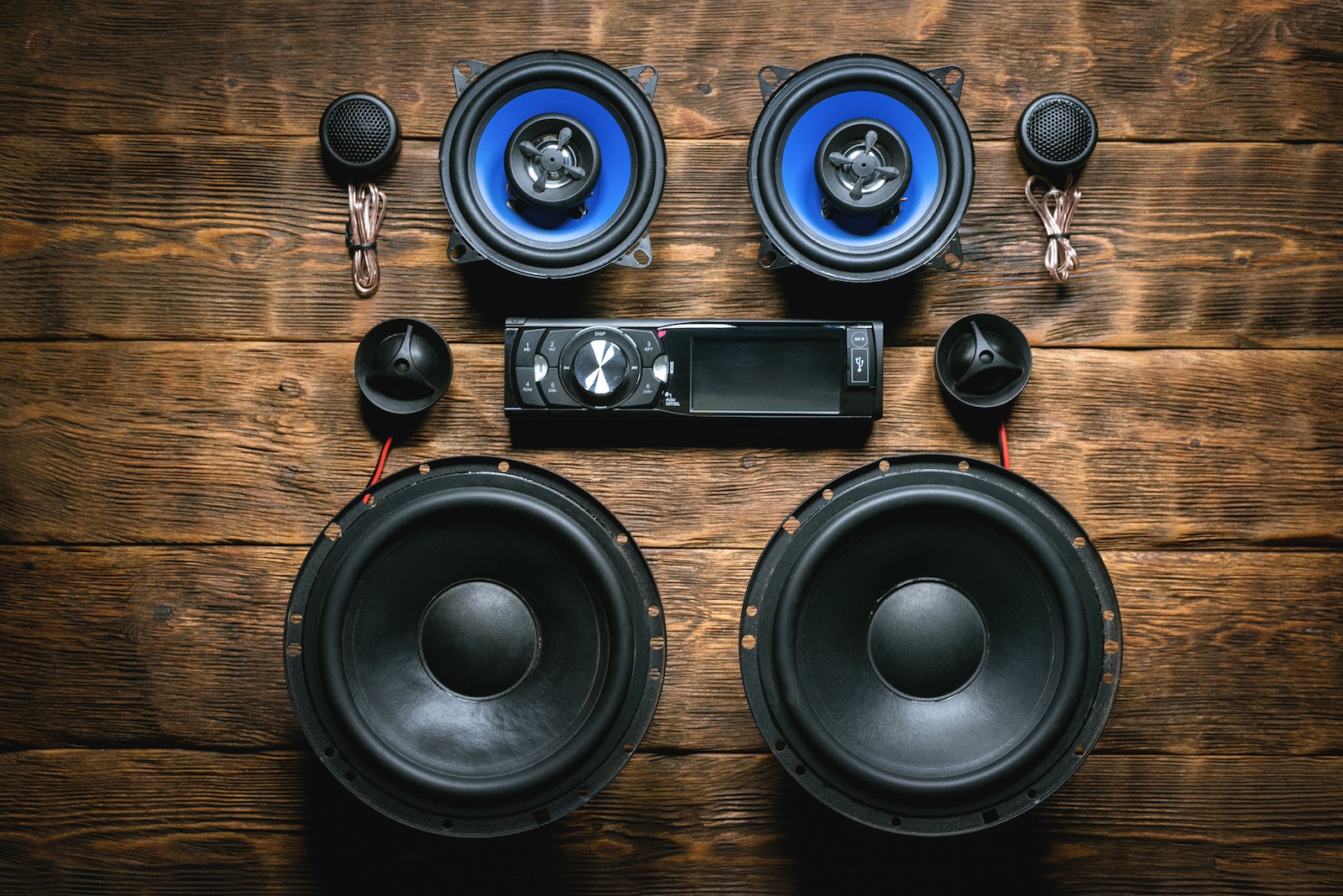
A car audio system with component speakers.
Component sets are the same as coaxials, but instead of the tweeter being mounted to the mid, they are separate. These are always wired with a crossover, which cuts the lower frequencies that can damage the speaker. The crossovers should match the model of the speaker because they are tuned specifically for that set of speakers. Mixing and matching can yield poor results.
What Is Speaker Impedance?
Impedance is the measure of electrical resistance in a speaker, expressed in ohms (Ω). It affects how much power a speaker draws from an amplifier and how loud and clean the output will be. Most aftermarket car speakers are designed with a standard 4-ohm impedance, which works well with most factory and aftermarket stereos.
However, not all vehicles use 4-ohm speakers. Some factory systems, especially those with premium or amplified sound, utilize speakers with unusual impedance values, such as 1.5 ohms or 8 ohms, to maximize power from the built-in amplifiers. That’s where things get tricky.
If you replace a 1.5-ohm factory speaker with a 4-ohm aftermarket speaker, the new one may sound weak and underpowered. On the other hand, replacing an 8-ohm factory speaker with a 4-ohm unit could result in significantly louder sound. But it also risks overloading the system.
Before replacing any speaker, it’s essential to verify the impedance of your factory setup. Vehicles with complex or premium sound systems may require not only new speakers but also bypassing or replacing the factory amplifiers—or the entire head unit—to ensure everything works properly together.
Do New Speakers Need to Match Your Audio System?
Absolutely. For the best performance and longevity, your new speakers should be properly matched to your head unit or amplifier. Too much power can be risky, but too little is often worse. For example, connecting 150-watt speakers to a 25-watt head unit might seem okay—they’ll work—but they’ll be severely underpowered. You’ll end up turning the volume higher, which can introduce distortion and eventually damage the speakers. Matching your components ensures cleaner sound and fewer problems down the road.
Troubleshooting Problems
Why Are Your Car Speakers Buzzing, Muffled, or Distorted?
Buzzing, muffled, or distorted sound usually means one or more of your speakers are starting to fail. Car audio systems rely on a combination of speaker types—tweeters, mid-range woofers, and subwoofers—to deliver the full spectrum of sound. When any one of them stops working properly, the balance falls apart.
Here’s what can go wrong:
- Buzzing: Buzzing is often caused by a damaged cone or a torn surround that vibrates against another part of the speaker. It can also mean the voice coil—the part that moves the cone—has started to fail.
- Muffled sound: This may indicate a dead or weak tweeter or a mid-range woofer that’s no longer producing clear sound.
- Distortion: This can happen when a speaker is underpowered, damaged, or has a burned voice coil. It often gets worse at higher volumes.
In short, each speaker plays a specific role. If one isn’t working right, you’ll hear it. The fix might be a single replacement—or it might be time for an upgrade.
Why Are Your Car Speakers Not Working?
If your sound system doesn’t quite feel right—maybe it’s quieter on one side, or a speaker sounds fuzzy or lifeless—you might be dealing with a faulty speaker. The goal is to isolate each speaker to determine which one isn’t performing as well as the rest.
Here’s an easy way to test it using your stereo’s balance and fader controls:
- Play music you know well—something with a full range of sound.
- Go into your stereo’s tone settings and adjust the fader all the way to the front, then the balance all the way to the left.
- Listen carefully to that speaker.
- Move the balance all the way to the right. Now you’re only hearing the front right speaker.
- Next, slide the fader to the rear, then repeat the left-right process.
This will let you listen to each speaker individually. If one sounds dull, distorted, or noticeably different from the others, you’ve likely found your problem.
Keep in mind that the issue isn’t always the speaker itself. To confirm, you can access the wiring behind the suspect speaker and temporarily connect a speaker you know is good to those wires. If the new speaker sounds fine, the original speaker is the culprit. If not, the issue may lie in the wiring, amplifier, or head unit.
Installation and Replacement
Can You Replace Your Car Speakers?
Yes, all car audio speakers can be replaced—but the difficulty depends on your vehicle’s make, model, and year. Some cars make it easy, requiring just a few screws to access the speakers. Others involve removing panels, trim, or even the dashboard.
What Tools Are Needed to Replace Car Speakers?
- Screwdrivers
- Sockets and ratchet
- Wire cutters
- Wire crimpers
- Cordless drill/driver
- Nylon pry tools (to remove push pins)
- Hook and pick set (to remove specialty clips)
Which Car Speaker Wires Are Positive and Negative?
Before installing replacement speakers, it’s highly recommended to research your vehicle’s specific make and model. This will help you identify the correct speaker sizes and wire colors and determine whether your car features a premium sound system that may require additional components. In most cases, you’re limited to the factory speaker size unless you’re willing to fabricate custom mounts—something most DIYers prefer to avoid. Sticking with factory sizes usually results in a smoother installation.
To determine the polarity of the speaker wire, you can use a simple battery test. Grab a standard battery—like a 9-volt, AA, or AAA—and two pieces of wire. Briefly touch the battery’s positive (+) terminal to one speaker terminal and the negative (–) to the other. The speaker cone will make a soft “pop” and either push outward or pull inward. If it pushes out, the polarity is correct; those terminals are positive and negative, respectively. If it pulls in, the polarity is reversed.
Getting this wrong won’t break anything, but it will impact sound quality. Incorrect polarity can make your music sound hollow or thin, with weak bass and strange imaging, because one speaker ends up canceling out the sound from the others.
How to Replace Car Speakers in a Door
While the exact steps vary by vehicle, replacing door speakers is usually a manageable job for most DIYers. That said, it’s crucial to understand how the door panel is removed before proceeding. If you’ve never done this before, take the time to research the removal process for your specific make and model—otherwise, you risk breaking clips, tearing upholstery, or damaging trim pieces.
Most door panels are held in place with a mix of fasteners, including clips, pushpins, screws, releasable pins, and sometimes bolts. The arrangement varies depending on the vehicle, so consult a service manual or online guide to avoid any surprises.
Once the panel is off, you’ll see the speaker—either mounted directly to the door or housed in a factory pod. Some newer vehicles (especially those made after 2000) use molded speaker mounts that don’t match aftermarket sizes. In these cases, you may need adapter plates to fit your new speakers.
To install the new speaker, first disconnect the old one. If you know the wire color codes, use them to determine polarity. If not, refer to the battery “pop” test described earlier. Cut the factory wires and crimp on correctly sized female spade terminals. Avoid using the all-in-one crimper/stripper tools, as they don’t make strong, reliable connections. Use a high-quality crimping tool instead.
Finally, connect the wires to the new speaker and secure it in place on the door. Do not solder the connections. Modern vehicles experience frequent vibration and temperature swings, which can cause solder joints to crack and fail over time. Crimp connections are the industry standard for good reason.
Shopping and Selection
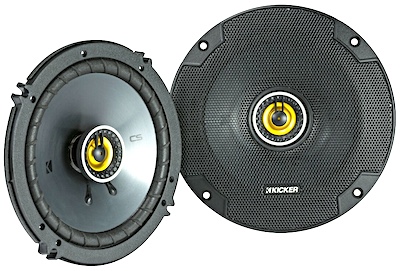
Kicker’s CS-Series 2-way coaxials are a popular and affordable choice to replace 6.5-inch round factory speakers.
How Much Do Car Audio Speakers Cost?
A basic set of factory-style replacement speakers typically ranges from $25 to $75.
Mid-level coaxial speakers typically range from $100 to $250, while component sets usually start at around $150 and can cost up to $350.
Once you’re spending $400 or more, you’re entering high-end territory. Audiophile-grade speakers can cost anywhere from $1,500 to $3,000, with some outliers reaching even higher prices. These premium systems aren’t designed to run off a factory head unit—they require dedicated amplifiers to deliver clean, powerful sound.
That said, don’t let your ears overspend your budget. Car audio upgrades tend to snowball. First, it’s the speakers, then the head unit, then a sub or two—before you know it, you’ve got three 12s, four amps, and a $10,000 system (which, yes, would sound incredible).
If you replace worn factory speakers and are not planning further upgrades, OE-style replacements are usually more than enough. But if you’re chasing bigger, better, and louder sound, you’re stepping into a whole new world of car audio. From here on out, you’re not just chasing perfect sound. You’re on a fun but unending pursuit of audio nirvana. Just don’t say we didn’t warn you.
Which Car Speaker Brands Are the Best?
Every brand sells entry-level speakers, and many sell high-end premium speakers. What is best for you depends on what you want from the stereo. Stock replacement speakers are available from brands such as Alpine, JBL, Kenwood, Kicker, Rockford Fosgate, and Sony. These are the most common brands that sell a wide range of car audio components, including head units, amplifiers, speakers, and wiring.
High-end speaker manufacturers typically start at the upper end of the mid-level price range, around $500, and increase to $5,000 or more. Brands such as Audison, Focal, Morel, and Mosconiare are considered the very best in-car audio speakers. These premium brands make speakers, amps, and processors.
The Bottom Line
Understanding your car’s audio system doesn’t require an engineering degree, but knowing the basics can save you time, money, and frustration. Whether you’re dealing with a single blown speaker or considering a complete system upgrade, proper diagnosis is the first step toward better sound.
Once you’ve identified the problem and understand what type of speakers you’re working with, you’ll be ready to make informed decisions about repairs or upgrades.

